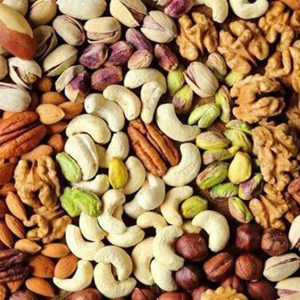Thanksgiving is a cherished holiday in the United States, celebrated annually on the fourth Thursday of November. The history of Thanksgiving traces back to the early 17th century, when Pilgrims and Native Americans came together for a feast that would later become a symbol of gratitude and unity.
The Origins of Thanksgiving
Pilgrims and the Mayflower Voyage
The history of Thanksgiving dates back to 1620 when a group of English Pilgrims, seeking religious freedom, embarked on the Mayflower voyage to the New World. After a challenging journey, they landed at Plymouth Rock in what is now Massachusetts.
The Harsh Winter and the First Harvest
The Pilgrims faced a harsh winter that claimed many lives, but with the help of Native Americans, particularly Squanto, they learned essential agricultural skills. The following autumn, they reaped a bountiful harvest, a cause for celebration.
The First Thanksgiving
The Feast
In the fall of 1621, the Pilgrims invited Native Americans, including the Wampanoag tribe, to join them in a three-day feast. This event is often considered the first Thanksgiving, where both communities came together to share food, express gratitude, and celebrate their newfound friendship.
History of Thanksgiving, The Menu
The menu of the first Thanksgiving was diverse, featuring a variety of foods such as venison, wild turkey, fish, corn, beans, squash, and various fruits. The Pilgrims and Native Americans contributed dishes from their respective culinary traditions.
Thanksgiving Becomes a National Holiday
Sarah Josepha Hale’s Campaign
In the 19th century, Sarah Josepha Hale, a prominent writer and editor, advocated for Thanksgiving to become a national holiday. Her persistent efforts eventually caught the attention of President Abraham Lincoln.
President Lincoln’s Proclamation
In 1863, in the midst of the Civil War, President Lincoln issued a proclamation officially declaring Thanksgiving a national holiday. He designated the last Thursday in November as a day of thanksgiving and praise.
Modern-Day Celebrations
History of Thanksgiving, Traditions and Customs
Over the years, Thanksgiving has evolved, incorporating various traditions such as the Macy’s Thanksgiving Day Parade, football games, and the presidential turkey pardon. Families across the nation gather to share a festive meal and express gratitude for their blessings.
The Spirit of Thanksgiving
Beyond its historical roots, Thanksgiving has come to symbolize the importance of gratitude, unity, and the spirit of giving. It serves as a time for reflection on the blessings of the past year and the relationships that enrich our lives.
The Cultural Evolution of Thanksgiving: From Harvest Feasts to Modern Traditions
The History of Thanksgiving is a captivating narrative that reflects the cultural evolution of a holiday rooted in gratitude and unity. Over the centuries, this celebration has transformed from its humble origins into a multifaceted occasion marked by diverse traditions and customs.
History of Thanksgiving, The Early Years: A Fusion of Cultures
The initial Thanksgiving feast in 1621 was not a solitary event; rather, it marked the beginning of a cultural exchange between the Pilgrims and the Native Americans. This interchange extended beyond culinary traditions, encompassing language, customs, and communal practices. The merging of these distinct cultures during the early years laid the foundation for the diverse and inclusive nature of modern-day Thanksgiving celebrations.
History of Thanksgiving, The Influence of Immigration
As waves of immigrants arrived in the United States, each group brought its unique customs and culinary practices to the Thanksgiving table. The holiday gradually evolved into a mosaic of traditions, with contributions from various ethnic and cultural backgrounds. Elements of Italian, German, and Irish traditions, among others, became intertwined with the original Pilgrim and Native American customs.
Thanksgiving in the 19th Century: A National Affair
The 19th century witnessed the transformation of Thanksgiving from a regional celebration to a national holiday. Sarah Josepha Hale’s relentless campaign played a pivotal role in this evolution. Hale’s advocacy not only emphasized the historical significance of the Pilgrims’ feast but also promoted the idea of a unified, national day of gratitude.
History of Thanksgiving, Thanksgiving and American Identity
As the United States grappled with the challenges of the Civil War, President Abraham Lincoln’s proclamation in 1863 solidified Thanksgiving as a symbol of national unity. The holiday became a testament to resilience and a reminder of the importance of coming together in times of hardship.
Modern Traditions: Macy’s Parade, Football, and Presidential Pardons
The late 19th and early 20th centuries witnessed the emergence of iconic Thanksgiving traditions. The Macy’s Thanksgiving Day Parade, inaugurated in 1924, became a cultural phenomenon, blending holiday cheer with the excitement of giant balloons and elaborate floats. Football games on Thanksgiving Day became another enduring tradition, bringing families and friends together to enjoy the sport and each other’s company.
The presidential turkey pardon, a more recent addition to Thanksgiving traditions, injects a touch of humor into the holiday. Each year, the President ceremoniously spares a turkey from becoming the centerpiece of a Thanksgiving feast, emphasizing the lighter side of this historic celebration.
Thanksgiving in the 21st Century: A Time for Reflection
In the contemporary era, Thanksgiving has expanded beyond its historical and cultural origins. While the essence of gratitude and unity remains at its core, the holiday has become an opportunity for reflection on societal values and a platform for discussions on inclusivity and diversity.
The multicultural tapestry of modern America is vividly reflected in the diverse dishes served on Thanksgiving tables across the country. Families integrate their cultural heritage into the traditional feast, creating a rich and varied menu that symbolizes the inclusivity of the holiday.
The Cultural Evolution of Thanksgiving: From Harvest Feasts to Modern Traditions
The History of Thanksgiving is a captivating narrative that reflects the cultural evolution of a holiday rooted in gratitude and unity. Over the centuries, this celebration has transformed from its humble origins into a multifaceted occasion marked by diverse traditions and customs.
The Early Years: A Fusion of Cultures
The initial Thanksgiving feast in 1621 was not a solitary event; rather, it marked the beginning of a cultural exchange between the Pilgrims and the Native Americans. This interchange extended beyond culinary traditions, encompassing language, customs, and communal practices. The merging of these distinct cultures during the early years laid the foundation for the diverse and inclusive nature of modern-day Thanksgiving celebrations.
History of Thanksgiving, The Influence of Immigration
As waves of immigrants arrived in the United States, each group brought its unique customs and culinary practices to the Thanksgiving table. The holiday gradually evolved into a mosaic of traditions, with contributions from various ethnic and cultural backgrounds. Elements of Italian, German, and Irish traditions, among others, became intertwined with the original Pilgrim and Native American customs.
Thanksgiving in the 19th Century: A National Affair
The 19th century witnessed the transformation of Thanksgiving from a regional celebration to a national holiday. Sarah Josepha Hale’s relentless campaign played a pivotal role in this evolution. Hale’s advocacy not only emphasized the historical significance of the Pilgrims’ feast but also promoted the idea of a unified, national day of gratitude.
History of Thanksgiving, Thanksgiving and American Identity
As the United States grappled with the challenges of the Civil War, President Abraham Lincoln’s proclamation in 1863 solidified Thanksgiving as a symbol of national unity. The holiday became a testament to resilience and a reminder of the importance of coming together in times of hardship.
Modern Traditions: Macy’s Parade, Football, and Presidential Pardons
The late 19th and early 20th centuries witnessed the emergence of iconic Thanksgiving traditions. The Macy’s Thanksgiving Day Parade, inaugurated in 1924, became a cultural phenomenon, blending holiday cheer with the excitement of giant balloons and elaborate floats. Football games on Thanksgiving Day became another enduring tradition, bringing families and friends together to enjoy the sport and each other’s company.
The presidential turkey pardon, a more recent addition to Thanksgiving traditions, injects a touch of humor into the holiday. Each year, the President ceremoniously spares a turkey from becoming the centerpiece of a Thanksgiving feast, emphasizing the lighter side of this historic celebration.
Thanksgiving in the 21st Century: A Time for Reflection
In the contemporary era, Thanksgiving has expanded beyond its historical and cultural origins. While the essence of gratitude and unity remains at its core, the holiday has become an opportunity for reflection on societal values and a platform for discussions on inclusivity and diversity.
The multicultural tapestry of modern America is vividly reflected in the diverse dishes served on Thanksgiving tables across the country. Families integrate their cultural heritage into the traditional feast, creating a rich and varied menu that symbolizes the inclusivity of the holiday.
The Cultural Evolution of Thanksgiving: From Harvest Feasts to Modern Traditions
The History of Thanksgiving is a captivating narrative that reflects the cultural evolution of a holiday rooted in gratitude and unity. Over the centuries, this celebration has transformed from its humble origins into a multifaceted occasion marked by diverse traditions and customs.
The Early Years: A Fusion of Cultures
The initial Thanksgiving feast in 1621 was not a solitary event; rather, it marked the beginning of a cultural exchange between the Pilgrims and the Native Americans. This interchange extended beyond culinary traditions, encompassing language, customs, and communal practices. The merging of these distinct cultures during the early years laid the foundation for the diverse and inclusive nature of modern-day Thanksgiving celebrations.
History of Thanksgiving, The Influence of Immigration
As waves of immigrants arrived in the United States, each group brought its unique customs and culinary practices to the Thanksgiving table. The holiday gradually evolved into a mosaic of traditions, with contributions from various ethnic and cultural backgrounds. Elements of Italian, German, and Irish traditions, among others, became intertwined with the original Pilgrim and Native American customs.
Thanksgiving in the 19th Century: A National Affair
The 19th century witnessed the transformation of Thanksgiving from a regional celebration to a national holiday. Sarah Josepha Hale’s relentless campaign played a pivotal role in this evolution. Hale’s advocacy not only emphasized the historical significance of the Pilgrims’ feast but also promoted the idea of a unified, national day of gratitude.
History of Thanksgiving, Thanksgiving and American Identity
As the United States grappled with the challenges of the Civil War, President Abraham Lincoln’s proclamation in 1863 solidified Thanksgiving as a symbol of national unity. The holiday became a testament to resilience and a reminder of the importance of coming together in times of hardship.
Modern Traditions: Macy’s Parade, Football, and Presidential Pardons
The late 19th and early 20th centuries witnessed the emergence of iconic Thanksgiving traditions. The Macy’s Thanksgiving Day Parade, inaugurated in 1924, became a cultural phenomenon, blending holiday cheer with the excitement of giant balloons and elaborate floats. Football games on Thanksgiving Day became another enduring tradition, bringing families and friends together to enjoy the sport and each other’s company.
The presidential turkey pardon, a more recent addition to Thanksgiving traditions, injects a touch of humor into the holiday. Each year, the President ceremoniously spares a turkey from becoming the centerpiece of a Thanksgiving feast, emphasizing the lighter side of this historic celebration.
Thanksgiving in the 21st Century: A Time for Reflection
In the contemporary era, Thanksgiving has expanded beyond its historical and cultural origins. While the essence of gratitude and unity remains at its core, the holiday has become an opportunity for reflection on societal values and a platform for discussions on inclusivity and diversity.
The multicultural tapestry of modern America is vividly reflected in the diverse dishes served on Thanksgiving tables across the country. Families integrate their cultural heritage into the traditional feast, creating a rich and varied menu that symbolizes the inclusivity of the holiday.
Order to send flowers and gifts to Shahrkado
Shahrkado is one of the most reliable collections through which you can send special and customized gifts, books and cultural gifts and gift packages to your loved ones inside Iran. Our colleagues at Shahrekado Collection are trying to prepare your orders as soon as possible and send them to your loved ones inside Iran. In addition, you can send flowers to your loved ones inside and outside of Iran in any city where they live through Shahrkado collection.
Conclusion
The history of Thanksgiving is a dynamic tapestry woven with threads of cultural exchange, immigration, and national unity. From the humble beginnings of a harvest feast in 1621 to the modern-day extravaganza encompassing parades, football, and presidential turkey pardons, Thanksgiving continues to evolve, embracing the ever-changing cultural landscape of the United States. As we gather around the Thanksgiving table each year, we not only celebrate the historical roots of this holiday but also contribute to its ongoing narrative, shaping Thanksgiving into a reflection of our diverse and vibrant society.

















